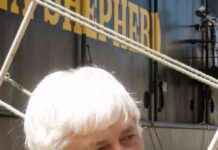Reducing Damage by 50%: TU Rosenheim’s Hagelflieger Initiative
For decades, Hagelflieger from the Rosenheim district have been “vaccinating” clouds during approaching storms to prevent the formation of large hailstones. Professor Peter Zentgraf from the Technical University of Rosenheim recently presented data at the Hagelforschungsverein Rosenheim member meeting, which he claims proves that “hail defense is demonstrably successful.” This has raised hopes that in the future, insurance companies may also contribute to the annual costs of 240,000 euros.
The Science Behind Hagelflieger’s Success
The Hagelflieger initiative, led by Professor Zentgraf, involves using aircraft to disperse silver iodide into storm clouds, which leads to the formation of smaller hailstones that are less damaging when they fall to the ground. This innovative approach has been shown to reduce hail damage by up to 50%, offering a promising solution to mitigate the impact of severe weather events on communities in the Rosenheim area.
Expert Validation and Future Prospects
Experts in the field of meteorology have praised the effectiveness of the Hagelflieger initiative, citing the tangible reduction in hailstone size and density as evidence of its success. Professor Zentgraf’s presentation at the Hagelforschungsverein Rosenheim meeting has garnered support from fellow researchers and weather professionals, who believe that this technique could revolutionize hail defense strategies globally.
Financial Implications and Community Benefits
The potential involvement of insurance companies in funding the Hagelflieger initiative signifies a significant step towards sustainable hail damage prevention. By sharing the financial burden with external partners, TU Rosenheim aims to expand the reach and impact of this groundbreaking project, ensuring that more regions can benefit from enhanced storm protection measures in the future.
In a world where climate change is exacerbating extreme weather events, the innovative approach of the Hagelflieger initiative offers a ray of hope for communities vulnerable to hailstorms. By combining scientific expertise with practical solutions, TU Rosenheim is leading the way in pioneering sustainable strategies to reduce the impact of severe weather on society.
Let’s reflect on the importance of collaborative efforts in tackling environmental challenges and supporting initiatives that prioritize community resilience. How can we contribute to similar projects in our own communities to build a more sustainable future for generations to come?







![EuroDreams (FDJ) Result: Draw of Thursday, November 28, 2024 [Online] news-29112024-173727](https://shanghainewstv.com/wp-content/uploads/2024/11/news-29112024-173727-218x150.jpg)









